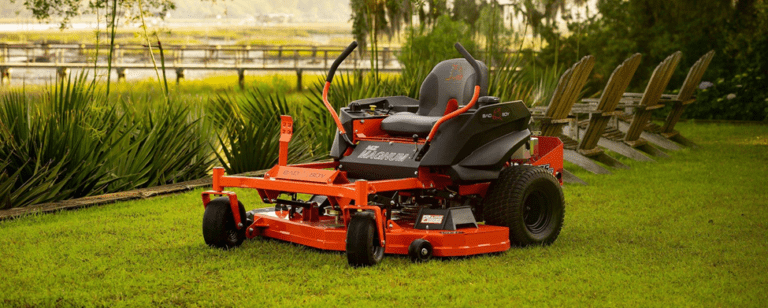Fight the Wind with the Best Windbreak Trees
For our pick for the best windbreak trees, we have to go with the durable Douglas fir. Whether you want to lower your energy bill, protect your yard from soil erosion, or protect your home from drifting snow, a windbreak can help. Windbreaks are usually made up of at least one row of trees, though denser windbreaks can have 10 or more rows. The best windbreak trees are usually evergreen, can withstand strong winds, and have long lives. The Douglas fir is an example of a popular tree that’s well suited to life in a windy area; however, if you want more choices, read on to learn what else you could pick.
Our 5 Favorite Windbreak Trees
[wptb id="8146" not found ]Benefits of a Windbreak
The concept of a windbreak is quite simple. It’s a row of trees, planted in a line. The trees used in a windbreak are typically evergreens, but the occasional deciduous tree can also be part of a windbreak, depending on the area and your goals.
Planting a windbreak offers many benefits to a homeowner. Perhaps one of the biggest benefits is a reduction in energy use needed to keep a home warm in winter or cool in the summer.
According to the Arbor Day Foundation, a row of conifer (evergreen) trees planted on the northern side of a property can reduce winter heating costs by as much as 30 percent. The trees form a living wall that keep icy winds from reaching the home. To get the greatest benefit, it’s usually recommended that the trees be no more than one or two tree heights away from the home.
If you live in an area that gets a considerable amount of snowfall in the winter, a windbreak can keep the snow from drifting up against your home. It can also minimize soil erosion in your garden and yard throughout the year.
Windbreaks can also provide some protection from summer winds and from the intense heat of the sun in the summer time.
How to Plant a Windbreak
Depending on your goals, it’s possible for a windbreak to consist of just a single row of trees. But often, windbreaks are more complicated than that and are made up of multiple rows. The trees in each row perform different functions at different times of year. Windbreaks will ideally block between 25 and 65 percent of the wind in an area.
For the densest coverage (65%), you’ll want to plant at least 10 rows of trees or shrubs. The densest windbreaks are usually needed by farms or in fields, and aren’t necessarily something the average homeowner needs to worry about.
If your goal is to protect your home from air and from drifting snow, a one to three row windbreak is ideal and will provide a density of between 40 and 50 percent.. One suitable combination is a single row of evergreen trees or two rows of deciduous trees. Another option is two rows, one of evergreen trees and the other deciduous trees.
When planting more than one row of trees or shrubs for the windbreak, make sure to leave ample room between the trees. You want to have a space of at least 10 feet between your rows. Any closer and your trees won’t have room to grow. Too far apart, though, and you won’t have an effective barrier.
Choosing Windbreak Plants
It’s not just the thickness of the tree’s leaves that help you determine whether they are a good fit for your windbreak or not. You also want to consider the growing conditions they need and their appearance.
Pick trees that will thrive in the type of soil you’re able to provide or amend your soil to create the ideal growing conditions for the trees. It’s also important to choose trees that are hardy in your zone. If you’re in zone 3, for example, a tree that’s only hardy in zones 5 through 8 won’t make it through the frigid winters in your area.
Variety is the spice of life and of windbreaks. You don’t have to plant rows and rows of the same trees, although that is an option if you’re planting a single row.
Instead, think about how the trees will look throughout the year. If you’re planting a mix of evergreen and deciduous trees, try to choose one variety of tree that will flower in the spring and one that will flower in the fall or that will otherwise be colorful to look at in the fall.
You also want to think about any animals that live in your area. Choose deer resistant trees if you want to keep them away from your property. If you want to attract birds, plant trees that produce fruit that will keep the birds coming back.
Trees to Avoid
Not all trees are good windbreak trees. In large part, the trees that will work best for you depend on your region and the soil conditions you can provide. But there are also some trees that are just no good for windbreaks.
These trees might grow quickly and die quickly, doubling the amount of work you need to do. Some trees are just too weak to effectively stand against strong winds. For example, the Jack Pine is no good in a windbreak. It has weak roots that won’t withstand the wind. It also produces weak wood.
Lombardy poplar is another tree to avoid. The tree grows fast, which can make it seem appealing. But after that period of rapid growth comes a period of rapid death.
Aspens also don’t make good windbreak trees, because their limbs are susceptible to breakage. The last thing you want is for the branch of the tree that’s supposed to be protecting your house from the wind to fall through your window or smash onto your back patio.
Some trees are more susceptible to pests and diseases than others and should be avoided for that reason. The black locust tree grows quickly and often falls victim to the locust borer, for example. Green ash should also be avoided because it frequently falls victim to the Emerald Ash borer. Finally, the Scotch Elm often suffers from pine wilt disease, particularly in the midwest. It’s another tree to pass on.
Best Windbreak Tree: The Douglas Fir
One of the best windbreak trees out there is the Douglas fir. It’s an evergreen tree and perhaps the most popular variety of Christmas tree. Outdoors, the tree can reach a height of up to 70 feet. It is also strong rooted, so that it can withstand strong winds and pressure from snow drifts.
The shape of the tree’s limbs and their strength are another feature that make the Douglas fir ideal for a windbreak. It grows in a pyramid shape, with branches that extend outward. The shape and size of the branches allow the tree to shed snow easily as well.
Although the Douglas fir can grow quite tall, it has a relatively moderate growth habit. During a typical year, it can grow between 13 and 24 inches. The tree won’t quickly overtake your yard if you plant it as a windbreak.
Another benefit of the Douglas fir, especially for homeowners in snowy or icy areas, is that it is able to tolerate some exposure to road salt.
Photo by Walter Seigmund licensed under CC BY 2.5.




![Best String Trimmer Reviews of [year]](https://properlyrooted.com/wp-content/uploads/2022/10/best-string-trimmer-reviews.png)